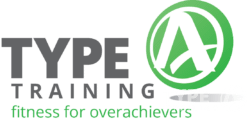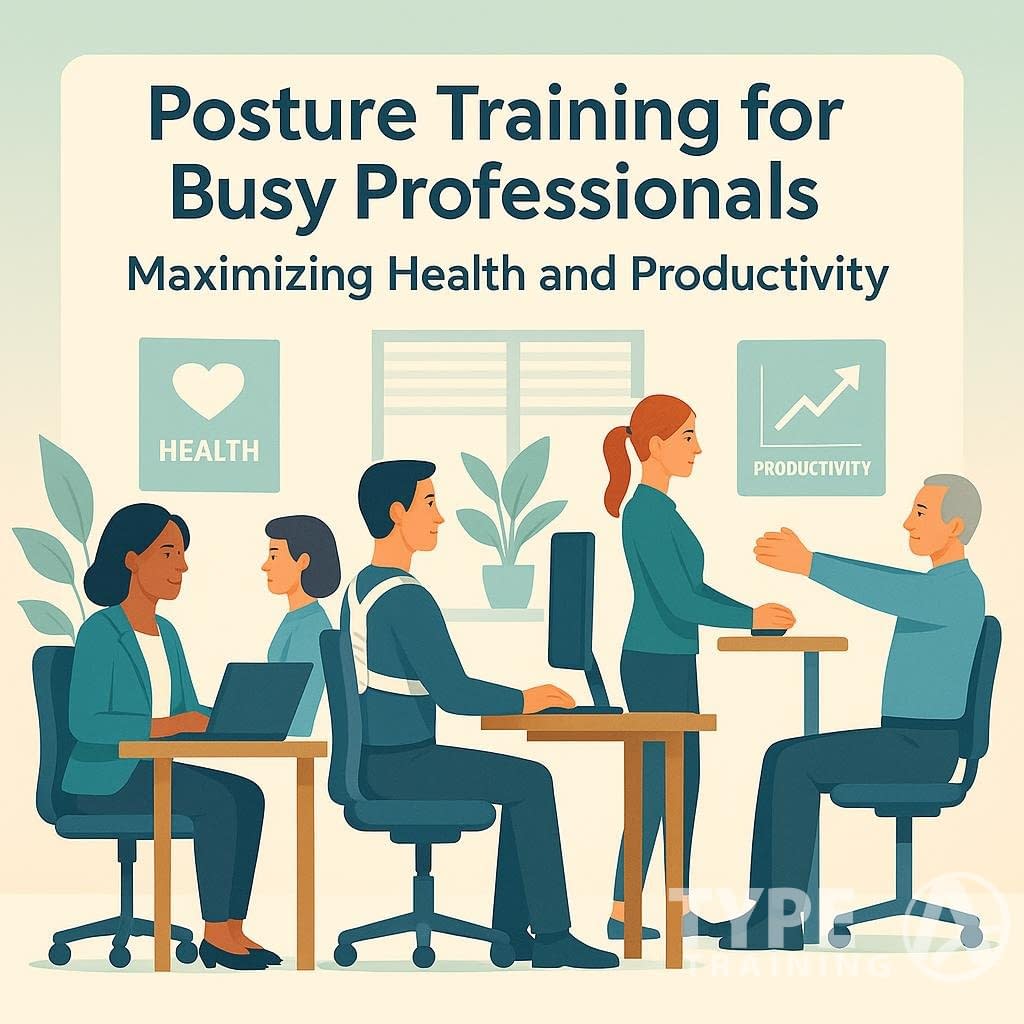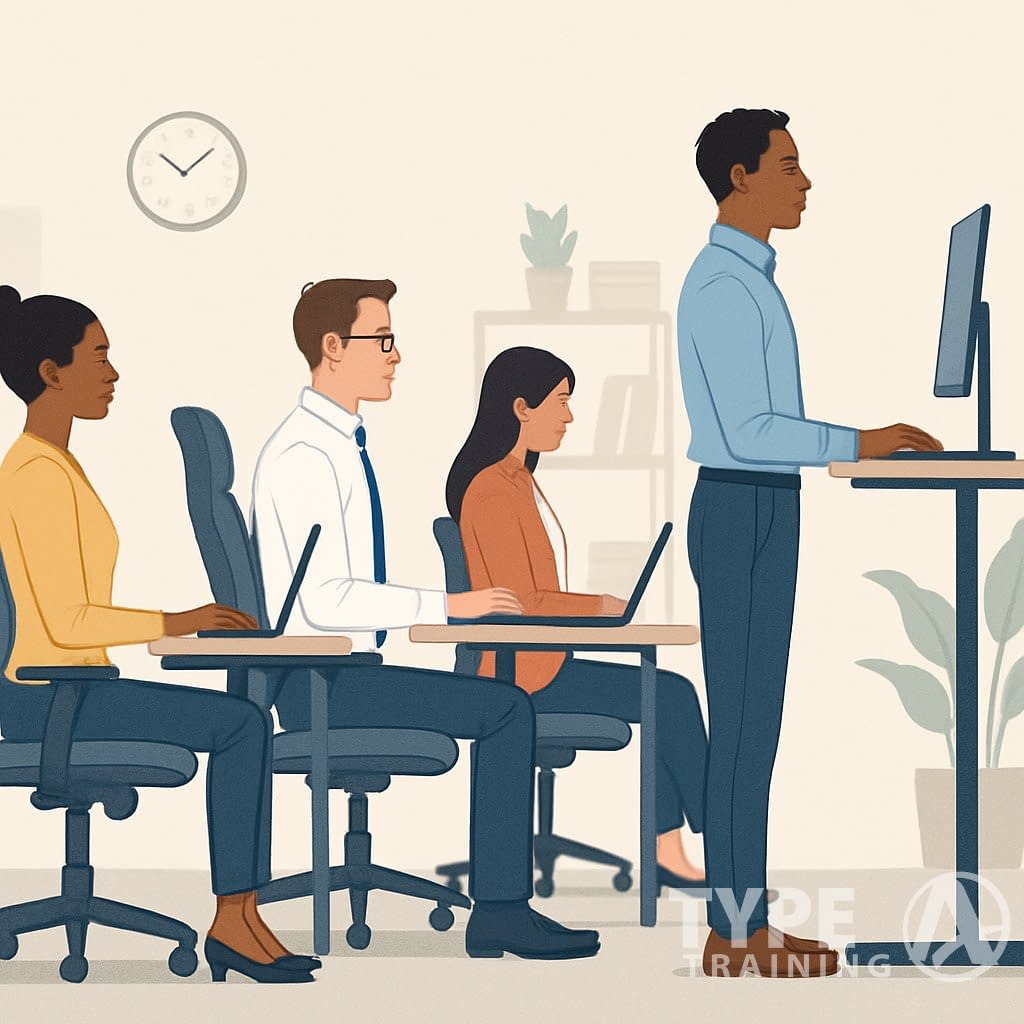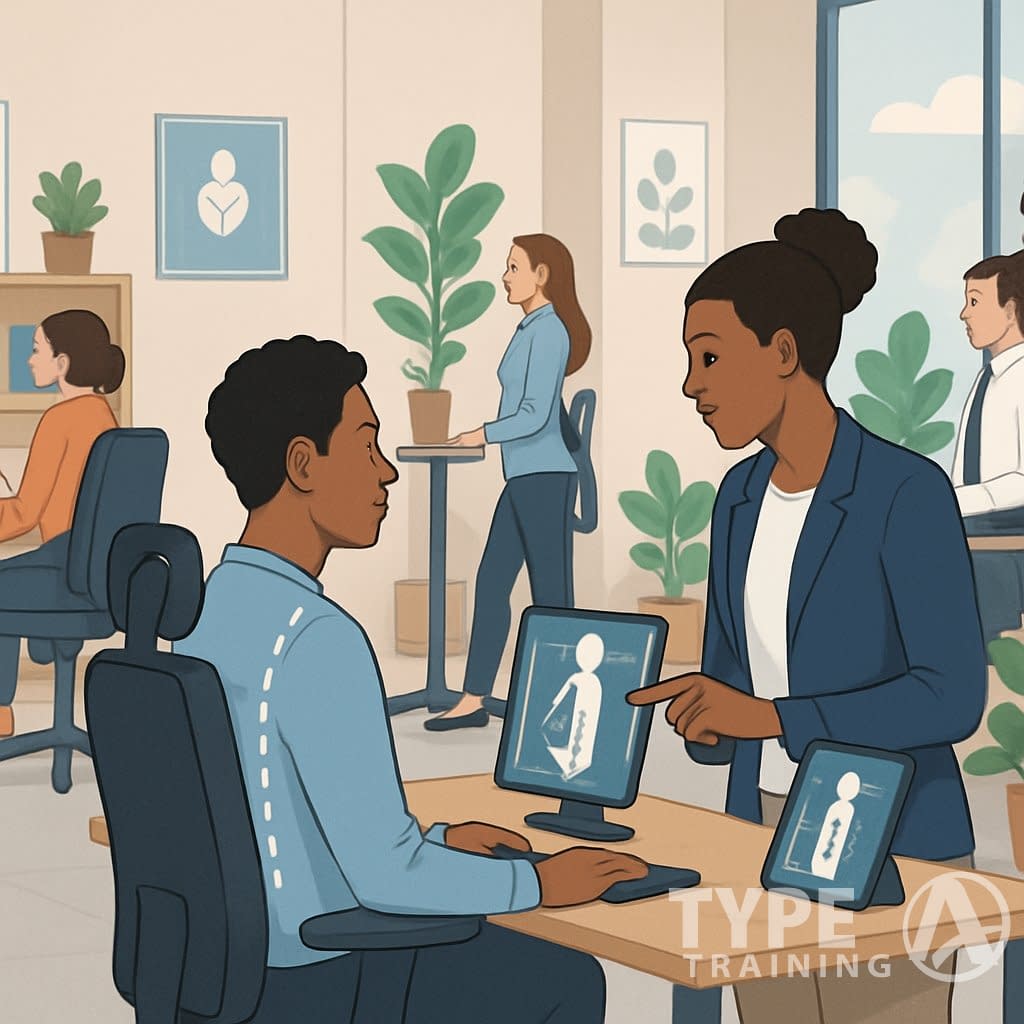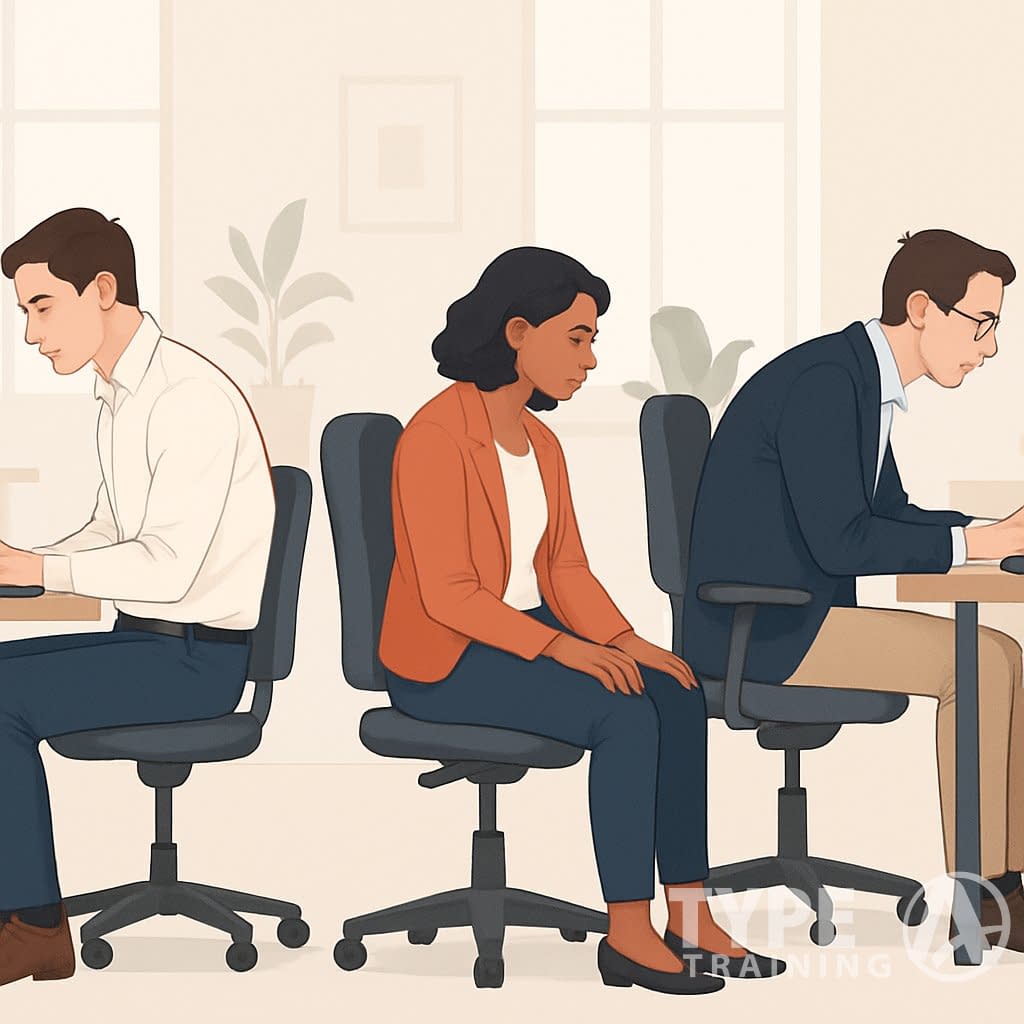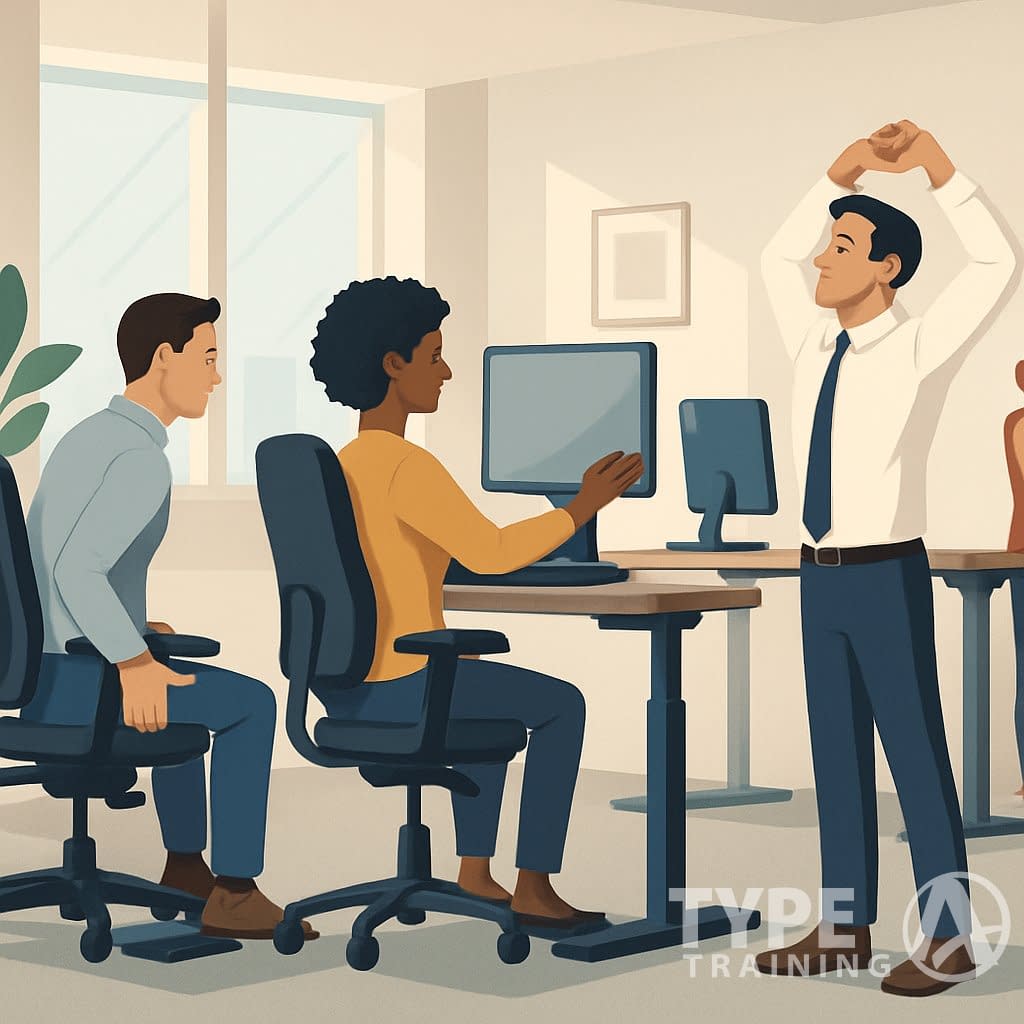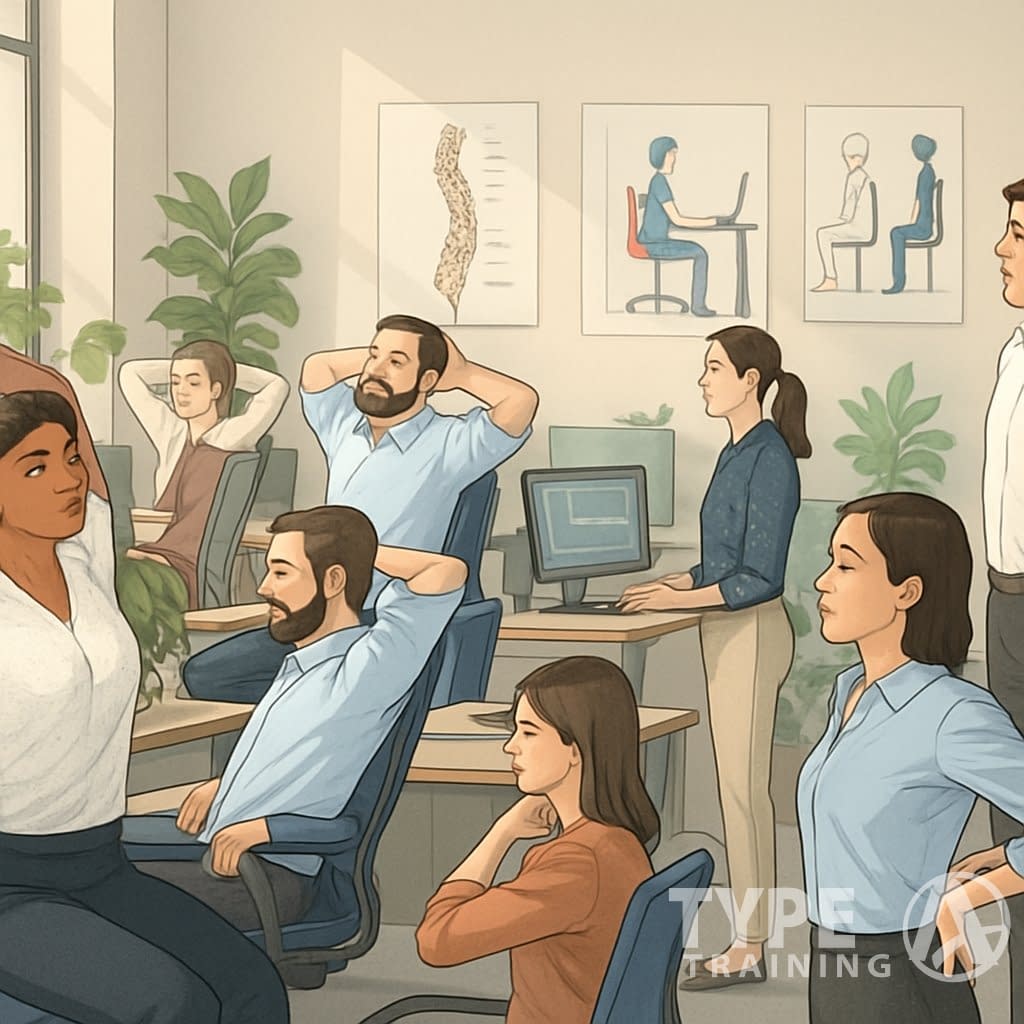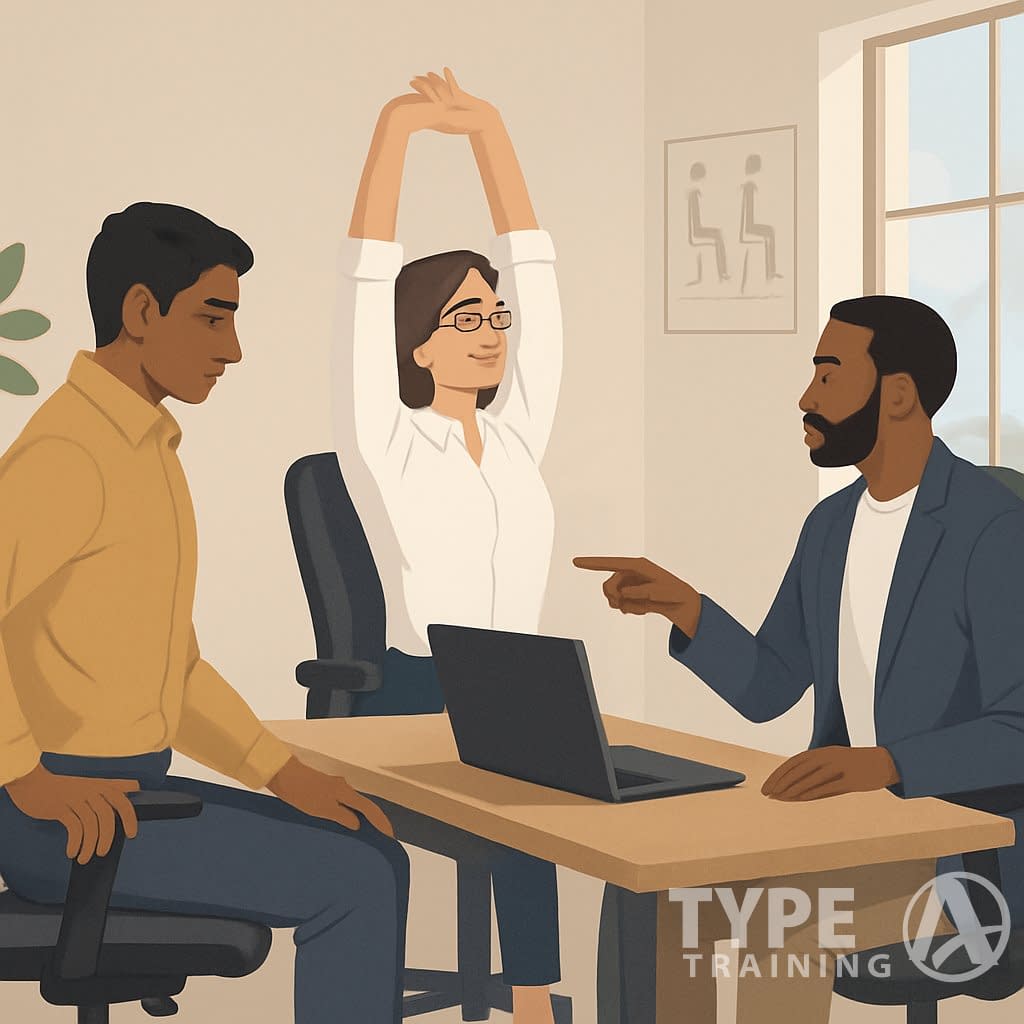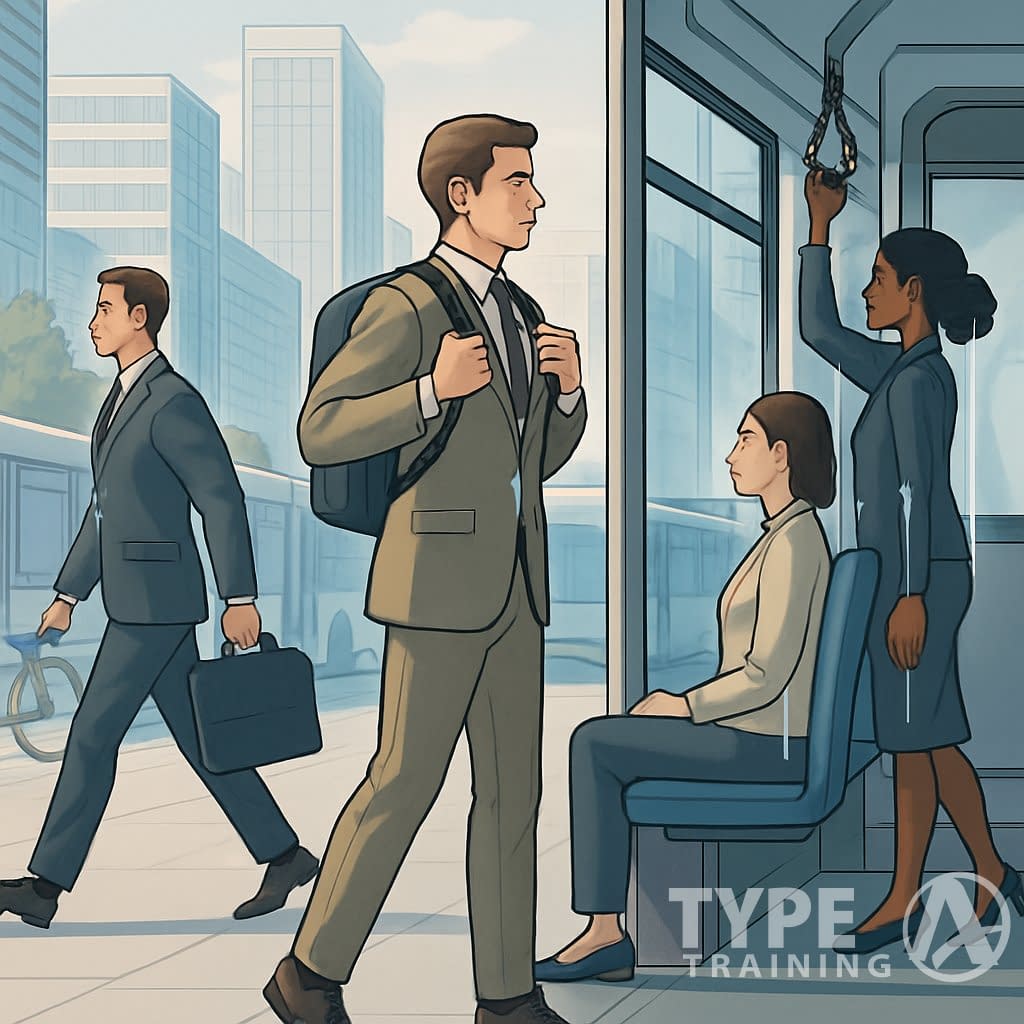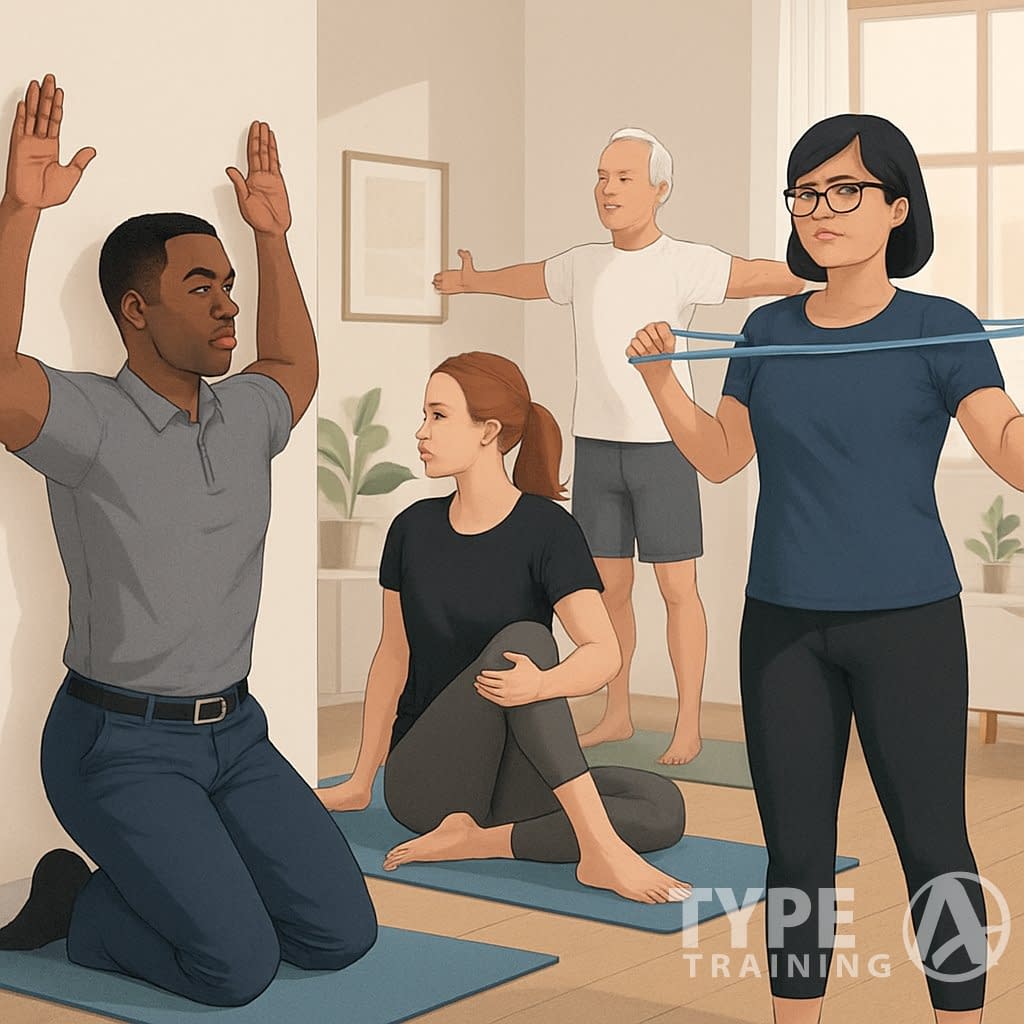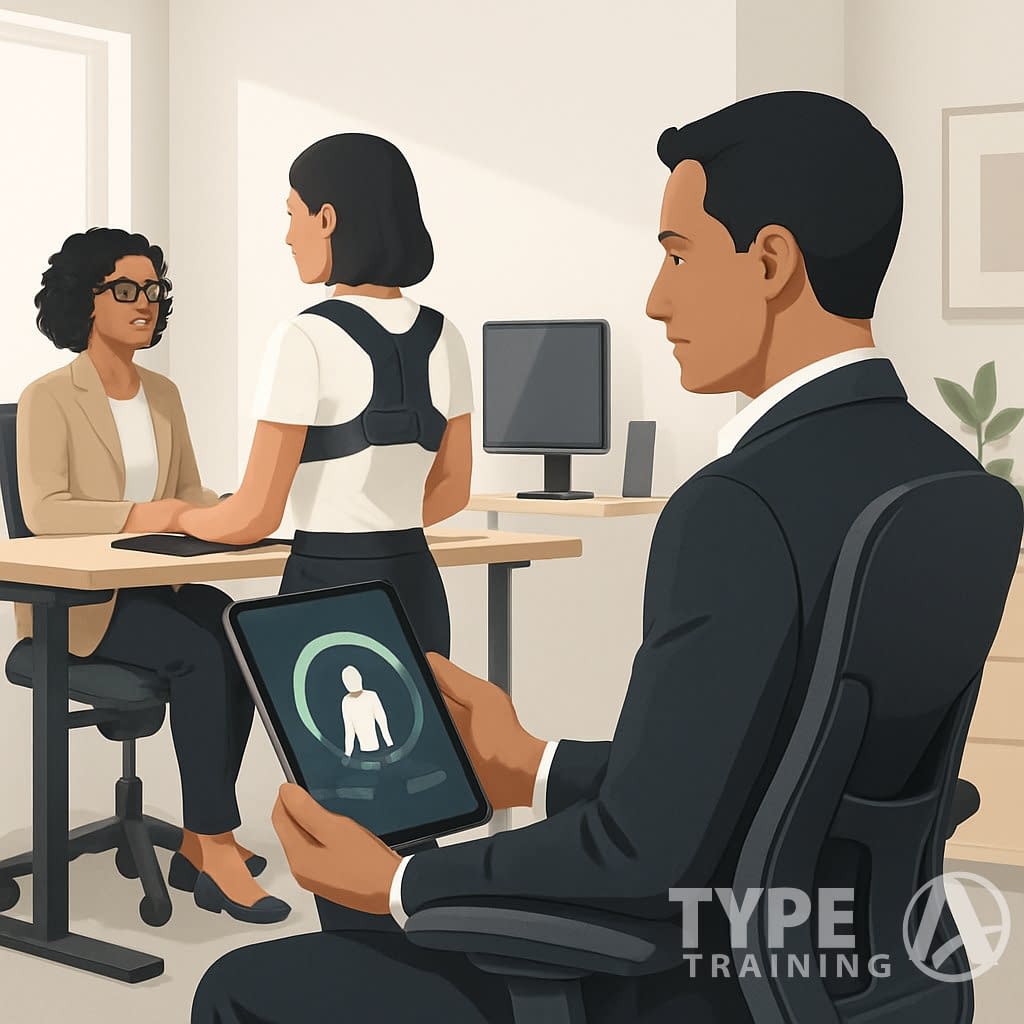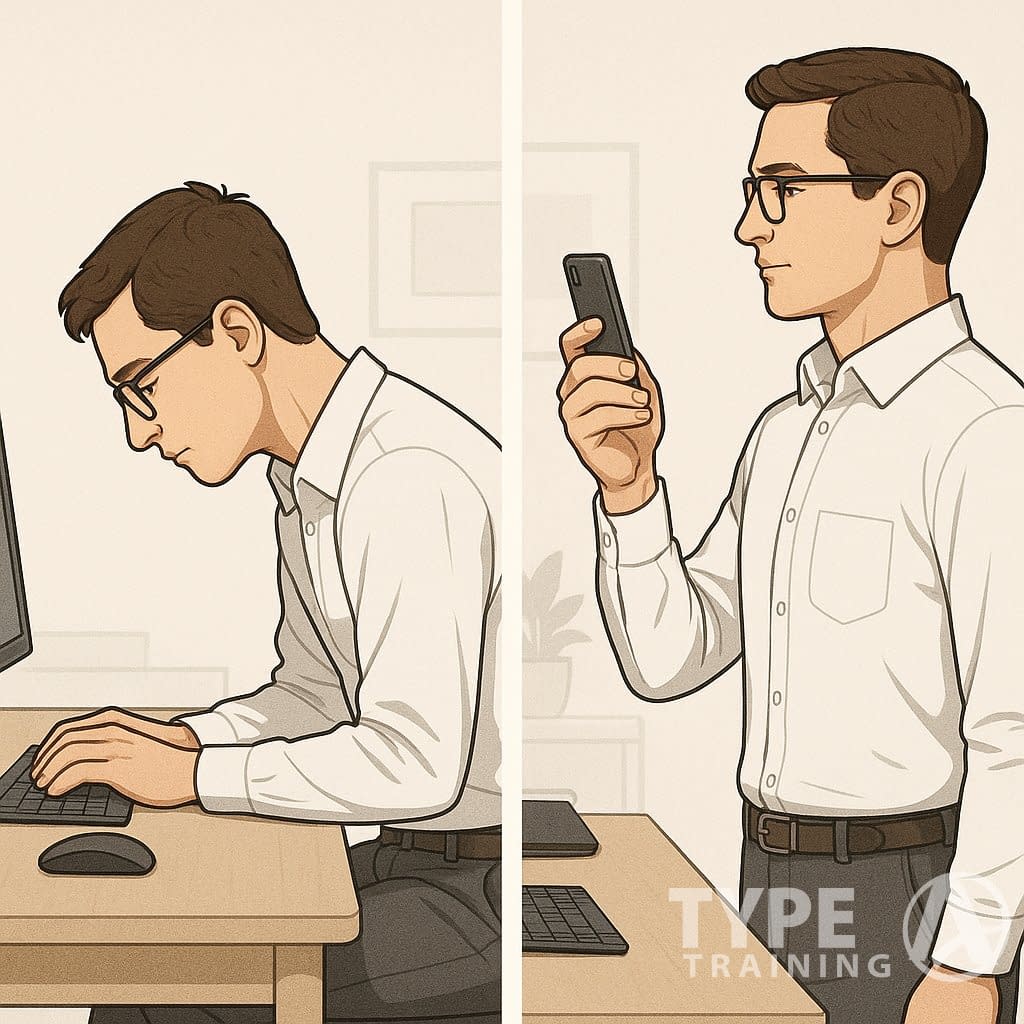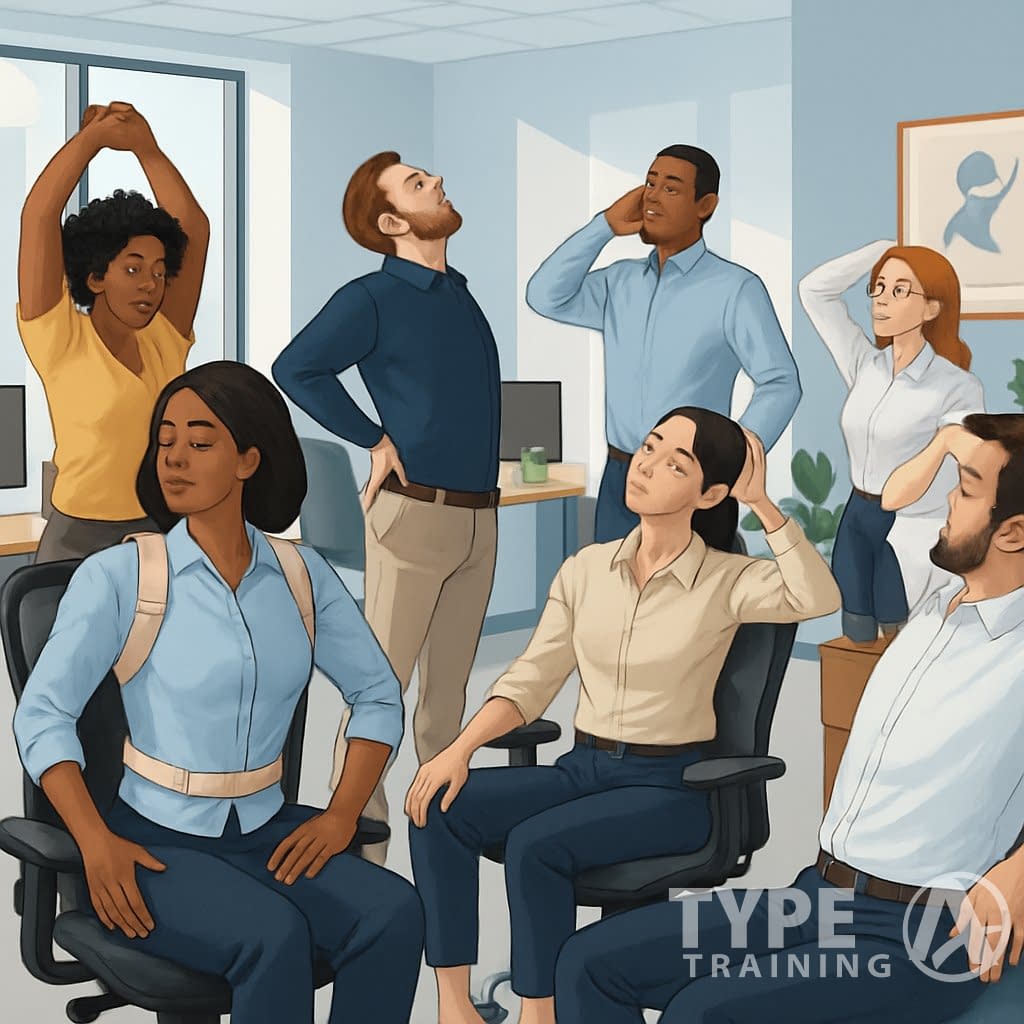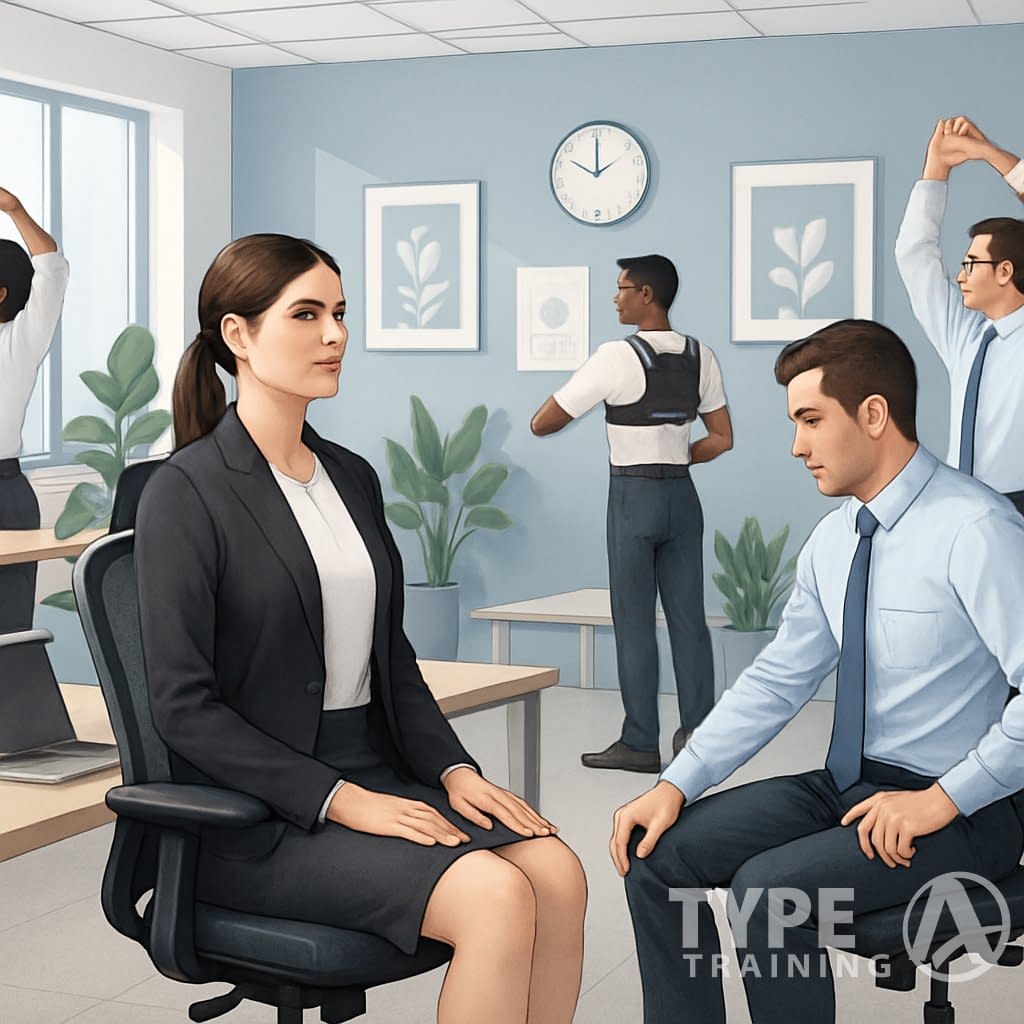Long hours at a desk, endless meetings, and constant screen time can leave your body tense and your posture off. Over time, this leads to stiffness, back pain, and lower energy levels that make it tough to stay focused.
Implementing effective posture training for busy professionals can result in significant improvements in comfort and productivity.
Improving your posture helps you reduce discomfort, move more freely, and maintain better health—even when your schedule is packed.
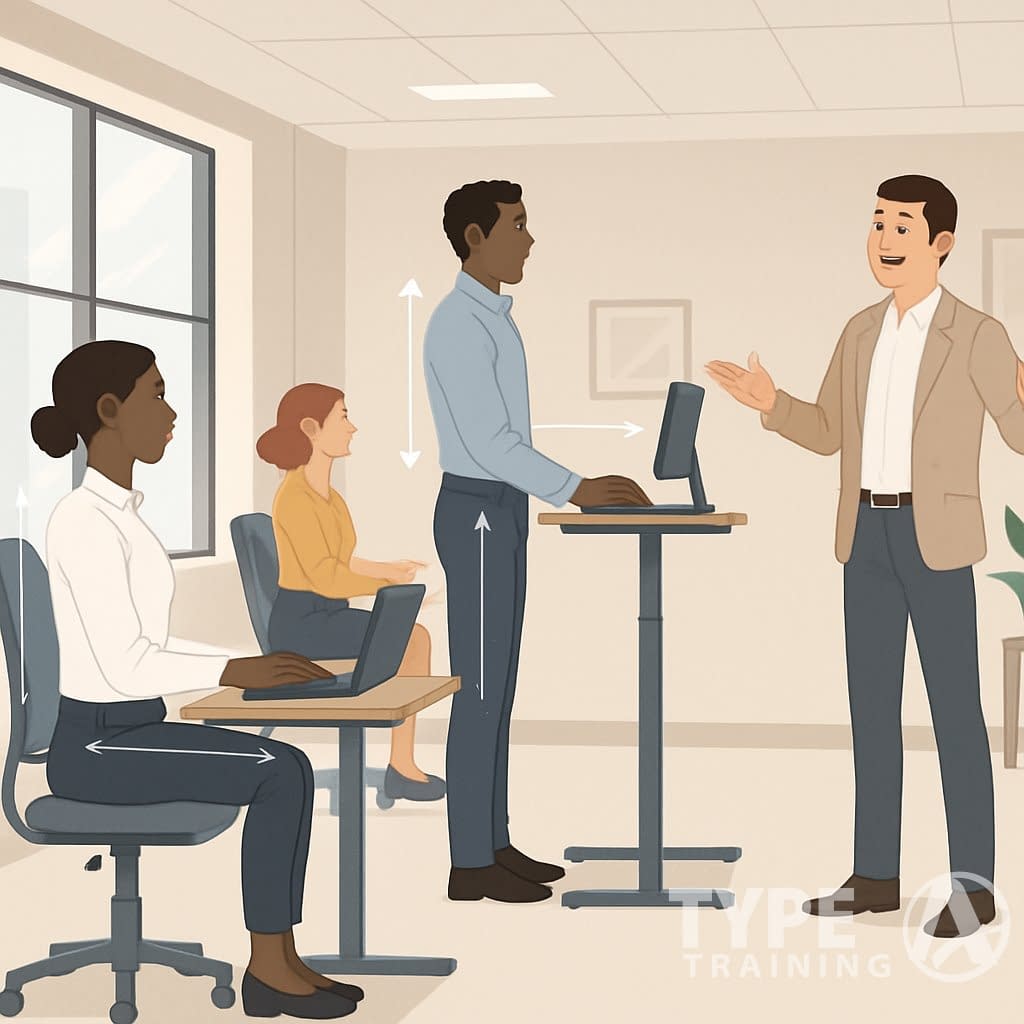
Popular posts:
You don’t need hours in the gym or complicated routines to see progress. Just making small adjustments to how you sit, stand, and move during the day can protect your spine and muscles.
For those engaged in posture training for busy professionals, the benefits extend beyond physical comfort.
Simple exercises, quick mobility breaks, and a better workstation setup can really change how you feel and perform. Spotting common posture problems and taking practical steps to fix them gives you a stronger foundation for both work and daily life.
Incorporating posture training for busy professionals into your daily routine can enhance your overall well-being.
Posture training isn’t about perfection. It’s about creating habits that support your body and keep you moving well.
Key Takeaways
- Good posture reduces pain and boosts daily energy
- Posture training for busy professionals leads to increased focus and energy levels.
- Small changes in habits and setup improve alignment
- Consistent practice builds long-term posture health
Effective Posture Training for Busy Professionals
Engaging in posture training for busy professionals helps maintain a healthy spine.
Good posture affects more than how you look at your desk. It supports your spine, reduces muscle strain, and helps you avoid discomfort that builds up during long workdays.
Regular posture training for busy professionals can prevent long-term health issues.
When you spend hours in prolonged sitting, your body often falls into slouched positions. This can lead to rounded shoulders, tight hips, and stiffness in your neck and back.
Over time, these habits make it harder to stay comfortable and focused. Poor posture can also influence your energy levels.
When your body is aligned, your muscles work more efficiently, which reduces fatigue. This makes it easier to stay alert and maintain steady productivity throughout the day.
You may notice posture affects your breathing, too. A slouched chest can limit lung expansion, while sitting or standing upright lets you breathe deeper and easier.
Better breathing supports both focus and endurance during long tasks. Common effects of poor posture at work:
- Neck and back pain
- Headaches from muscle strain
- Limited mobility in shoulders and hips
- Reduced focus after long periods of sitting
Making small adjustments can help you improve posture without major changes to your routine. Adjust your chair height, place your monitor at eye level, or stand up for short breaks to prevent discomfort.
Even short exercises like chin tucks or shoulder rolls counteract the effects of sitting. These movements keep your muscles active and ease the tension that builds from repetitive desk work.
Related: Effective Posture Training for Busy Professionals
Posture Self-Assessment: Quick Tests for Busy Professionals
Before you can improve your posture, you need to see how you currently stand and sit. A simple assessment helps you notice habits like slouching, leaning, or rounding your shoulders.
Start by standing in front of a mirror with your feet hip-width apart. Look at your head, shoulders, hips, and knees.
Assessing your stance is crucial for effective posture training for busy professionals.
Each should line up vertically in a neutral position. Check your shoulders—if they roll forward or look uneven, you might have rounded shoulders from too much desk time.
You can also try a quick wall test:
- Stand with your back against a wall.
- Keep your heels about 2–3 inches from the wall.
- Your lower back and head should touch lightly.
- If your shoulders don’t reach the wall, it suggests forward rounding.
When you’re sitting, notice if your spine stays upright or if you lean forward toward your screen. Pay attention to whether your weight shifts more to one side.
Taking photos from the front, side, and back can help you track your posture. Compare your alignment to a neutral stance where your ears, shoulders, hips, knees, and ankles form a straight line.
Here’s a simple checklist for self-assessment:
| Area | What to Look For |
|---|---|
| Head/Neck | Level, not tilted or pushed forward |
| Shoulders | Even, not rounded or slumped |
| Spine | Natural curves, not exaggerated |
| Hips | Level, not rotated or uneven |
| Knees/Feet | Facing forward, balanced weight |
Taking a few minutes to assess your posture regularly helps you spot small changes before they lead to discomfort.
By incorporating posture training for busy professionals into your assessments, you can see improvement.
Related: Posture Self-Assessment: Quick Tests for Busy Professionals
Common Posture Problems in Busy Professionals
Addressing common posture problems is key in posture training for busy professionals.
You’ll probably notice certain posture habits develop when you spend long hours at a desk. These habits might feel minor but they add stress to your body over time.
Recognizing them is the first step to making changes. One of the most common problems is forward head posture, or tech neck.
This happens when you lean your head toward a screen for long periods, putting extra strain on your neck and upper back. Another frequent issue is rounded shoulders from laptop use.
When you hunch forward to type or view a screen, your shoulders roll inward. This posture tightens chest muscles and weakens your upper back.
Slouching in long meetings is also common. Sitting without support or letting your spine curve too much reduces core engagement.
Many professionals develop habits like crossing legs or sitting with uneven weight. While it feels comfy, it can create imbalance in your hips and lower back.
Check out this quick table of posture issues and their common causes:
| Posture Problem | Likely Cause |
|---|---|
| Forward head posture (tech neck) | Leaning toward screens, phone use |
| Rounded shoulders | Laptop typing, hunching forward |
| Slouching in meetings | Lack of back support, fatigue |
| Crossing legs / poor sitting | Habitual sitting positions, chair setup |
These patterns are easy to overlook during busy days. By paying attention to them, you can start to correct small habits before they become bigger problems.
Understanding how posture training for busy professionals works can prevent future discomfort.
Further Reading: Common Posture Problems in Busy Professionals
Workplace Ergonomics Made Simple: A Guide for Busy Professionals
A well-arranged workspace helps you reduce strain from prolonged sitting and supports better posture throughout the day. Small adjustments in how you sit, stand, and move can prevent common issues like back pain, neck stiffness, and sore wrists.
A well-designed workspace is essential for successful posture training for busy professionals.
Use a simple desk setup checklist to guide your workspace:
| Item | Adjustment |
|---|---|
| Screen | Top at eye level, about an arm’s length away |
| Chair | Adjustable height with lumbar support |
| Keyboard | Aligned with elbows at a 90° angle |
| Mouse | Close to keyboard, at the same level |
| Footrest | Use if feet don’t rest flat on the floor |
Aim for an ideal sitting posture with your back supported, shoulders relaxed, and feet flat. When standing, keep weight evenly distributed and avoid leaning on one side.
Incorporating posture training for busy professionals into your daily routine can lead to lasting benefits.
Switching between sitting and standing during the day can reduce fatigue and improve comfort. Simple movements at your desk help offset long hours of sitting.
Try seated leg raises to activate your core, chair squats to strengthen your legs, and desk push-ups to engage your upper body. These short exercises boost flexibility and circulation without leaving your workspace.
Investing in the right tools makes a difference. Ergonomic chairs, lumbar cushions, and supportive footrests help you maintain alignment with less effort.
If you want more detail on setup, see How to Set Up an Ergonomic Desk. For equipment ideas, check Best Office Chairs and Accessories.
Related Guide: Workplace Ergonomics Made Simple: A Guide for Busy Professionals
Combating the Effects of Prolonged Sitting
Prolonged sitting puts stress on your muscles and joints, especially in the back, hips, and shoulders. It can slow circulation, leaving you stiff or just less alert than you’d like.
Even small adjustments help. Try standing up at least once every 30–60 minutes.
Just a quick walk to refill your water or stretch your legs really does make a difference.
Simple desk exercises help you stay active without leaving your workspace. Stuff like shoulder rolls, seated leg lifts, and neck stretches take less than a minute and loosen tight muscles.
Quick Desk Movements
- Seated leg extensions to work your quads
- Shoulder shrugs to release tension
- Neck rotations to ease stiffness
- Ankle circles to get your blood moving
Switching to a sit-stand desk or adjustable workstation cuts down on time spent stuck in one posture. Alternating between sitting and standing encourages better posture and keeps your muscles awake.
Outside of work, strength and mobility exercises support your fitness and help offset hours of sitting. Walking, cycling, or yoga can boost flexibility and circulation while building endurance.
Regularly practicing posture training for busy professionals is essential for overall comfort.
Sample Daily Movement Plan
Short breaks for posture training for busy professionals can greatly enhance your focus.
| Time of Day | Movement | Duration |
|---|---|---|
| Morning | Light walk | 10 min |
| Midday | Desk stretches | 5 min |
| Afternoon | Stand or walk break | 5–10 min |
| Evening | Fitness activity | 20–30 min |
Related: Combating the Effects of Prolonged Sitting: Signs & Solutions
Further Reading: Sedentary Lifestyle Risks: How To Break Free From Sitting
Posture and Remote Work: How to Stay Aligned at Home
Working from home has changed how you sit and move all day. Without a real office setup, you might end up hunched over on a couch, at the kitchen table, or at a makeshift desk—none of which do your posture any favors.
Sitting on soft couches lets your spine slump. Hunching over a laptop that’s too low or using chairs with no back support puts extra strain on your neck, shoulders, and lower back.
You don’t need fancy gear to make things better. Raise your laptop screen to eye level with a stand or a stack of books, and use an external keyboard and mouse so your arms can rest at a natural angle.
A quick comparison for adjustments:
Utilizing posture training for busy professionals during your commute can reduce discomfort.
| Common Setup Issue | Simple Fix |
|---|---|
| Laptop too low on desk | Elevate screen to eye level |
| Sitting on couch or bed | Switch to a chair with firm back support |
| Shoulders rounding forward | Take short breaks to stretch chest and back |
| Feet dangling or unsupported | Place feet flat on floor or use footrest |
Taking short breaks every hour helps you reset your posture. Stand, stretch, or walk for a few minutes to shake off tension.
Even small moves like chest openers or shoulder rolls can undo some of the effects of sitting too long.
Related: Posture and Remote Work: How to Stay Aligned at Home Effectively
Posture Hacks for Professionals Who Commute Daily
Long drives, train rides, and flights often force you to stay in the same position for way too long. This leads to stiffness, tight hips, rounded shoulders, and lower back strain.
How you sit matters. Keep your back against the seat and try not to lean forward.
Adjust the seat so your knees are level with or just below your hips. In the car, keep the steering wheel close enough so you don’t end up hunching.
On trains or planes, you don’t always get to pick the seat design, but you can still make things better. Use a small lumbar cushion or a rolled-up jacket behind your lower back, and rest your feet on a bag or portable footrest to reduce leg pressure.
Some quick posture hacks:
- Shift your weight often so you don’t get stiff.
- Lightly engage your core while sitting.
- Stretch your neck by gently tucking your chin.
- Roll your shoulders back every 20–30 minutes.
Try isometric exercises that don’t need much space. Press your palms together for a few seconds, or squeeze your glutes while you sit—these little things wake up your muscles and help with endurance during long sits.
Here’s a quick seating reference:
| Setting | Best Practice | Helpful Tools |
|---|---|---|
| Car | Seat upright, back supported | Lumbar cushion |
| Train | Back against seat, feet flat | Portable footrest |
| Plane | Support lower back, avoid crossing legs | Travel pillow, small cushion |
Related: Posture Hacks for Professionals Who Commute Daily
Quick Home Workouts for Posture Improvement
You can work on your posture at home with quick workouts that target key muscle groups. These moves strengthen your core, back, and legs, helping you stay aligned through long workdays.
Quick workouts for posture training for busy professionals can fit into any schedule.
Most require little or no equipment. Planks are a classic—hold your body in a straight line, keep your core tight, and shoulders steady.
Start with 20–30 seconds and build up as you go. Push-ups work your chest, shoulders, and core—focus on good form, not speed.
If classic push-ups are too tough, try them on your knees. Squats and lunges build your lower body and improve balance.
Strong legs and hips take pressure off your back. Keep your chest lifted and avoid leaning forward.
Resistance band workouts can strengthen your upper back. Simple band pulls or rows help keep your shoulders in better alignment and fight that desk slouch.
Leg raises are another easy option for your lower abs. Lie flat, keep your legs straight, and lift them slowly—don’t let your back arch.
This move supports core stability, which is key for upright posture. Here’s a quick exercise table:
| Exercise | Main Muscle Groups | Time/Reps | Equipment Needed |
|---|---|---|---|
| Plank | Core, shoulders | 20–60 sec hold | None |
| Push-ups | Chest, arms, core | 8–12 reps | None |
| Squats | Legs, glutes, core | 10–15 reps | None |
| Lunges | Legs, hips, balance | 8–12 reps/side | None |
| Resistance Band Rows | Upper back, shoulders | 10–15 reps | Resistance band |
| Leg Raises | Lower abs, core | 8–12 reps | None |
Related: Quick Home Workouts for Posture Improvement: Strengthen & Align
The Best Posture Training Tools for Busy Professionals
There are loads of tools out there to help you with posture during long workdays. Some are simple braces, others use tech to remind you when you start to slouch.
Picking the right one depends on your routine and comfort. Posture correctors pull your shoulders back and give you instant feedback, encouraging upright sitting or standing.
But honestly, they can feel restrictive if you wear them too long.
Pros: instant support, easy to use
Cons: might weaken muscles if overused, can be uncomfortable
| Tool | Benefit | Limitation |
|---|---|---|
| Basic corrector brace | Affordable, simple | Can feel tight, not discreet |
| Smart posture trainer | Gentle reminders, app tracking | Higher cost, needs charging |
| Standing desk | Reduces sitting time | Requires adjustment period |
| Treadmill desk | Adds movement | Not practical for all spaces |
Apps and wearables give you more flexibility. Smart posture trainers link to your phone and send gentle vibrations if you start slouching.
You can track your progress over time, which helps you build awareness and new habits. Standing desks and treadmill desks give you a way to mix things up.
Switching between sitting and standing keeps you from getting stuck in one position. A treadmill desk adds light movement, but let’s be real—it doesn’t work in every space.
If you want to dig deeper, check out [Do Posture Correctors Really Work?] and [Top Posture Training Apps.] These can help you figure out what fits your needs best.
Related: Best Posture Training Tools for Busy Professionals in 2025
How to Prevent Tech Neck in the Digital Workplace
Modern professionals spend hours each day on laptops, tablets, and phones. While technology keeps us connected and productive, it also fuels digital overload.
One of the most common side effects is “tech neck”—a forward head posture caused by constantly looking down at screens. Over time, this strain on the neck, shoulders, and upper back can lead to discomfort, fatigue, and even reduced productivity.
The effects go beyond physical pain. Poor posture from digital use can trigger headaches, lower energy, and subtly undermine confidence.
Think about the difference between slouching over a phone versus sitting tall during a meeting—your posture shapes not only how you feel but also how others perceive you.
Fortunately, small adjustments can prevent these issues. The 20-20-20 rule is a simple start: every 20 minutes, look at something 20 feet away for 20 seconds. This eases eye strain and prompts a natural posture reset.
Another easy fix is raising your phone or tablet closer to eye level instead of bending your neck downward. At your desk, keep your monitor at eye height and about an arm’s length away.
Short “micro-breaks” are another powerful tool for busy professionals. A quick chin tuck—sitting upright and gently pulling your chin back for five seconds—helps counteract forward head posture. Add in shoulder rolls or a standing stretch, and you can realign your body in under a minute.
Ultimately, managing digital overload is about awareness. By building posture-friendly habits into your screen time, you’ll protect your neck, boost energy, and project more confidence—all without losing productivity.
Quick Reference: Digital Overload Fixes
| Problem | Common Cause | Quick Fix |
|---|---|---|
| Tech Neck | Looking down at phone/tablet | Hold devices at eye level; chin tucks |
| Rounded Shoulders | Slouching at desk or laptop | Shoulder rolls; adjust chair & desk |
| Eye Strain | Staring at screen too long | 20-20-20 rule |
| Back Discomfort | Sitting for long periods | Stand/stretch every 30–60 minutes |
| Low Confidence | Slouched posture in meetings | Sit tall, chest open, shoulders back |
Related: How to Prevent Tech Neck in the Digital Workplace: Strategies
The Best Exercises to Strengthen Posture for Busy Professionals
Good posture starts with strong, balanced muscles. If your core, back, or shoulders are weak, your body has a tough time staying aligned.
Incorporating resistance exercises aids in posture training for busy professionals.
Effective Techniques for Posture Training for Busy Professionals
Regular exercise can help. It strengthens the muscles you don’t use enough and eases tension in the ones that do too much work.
Strength training works wonders for posture. Rows, planks, and squats build up your back and core, making it easier to keep your spine straight.
When you do these moves right, you put less strain on your joints. It’s not about lifting heavy—it’s about moving well.
Yoga is another great tool. Poses like mountain pose, cat-cow, and downward dog stretch out tight muscles and make you more aware of how you’re standing or sitting.
These movements encourage your spine to align naturally. They also help loosen up areas that tend to pull you forward.
Pilates focuses on slow, controlled movements and turning on your core muscles. Even simple desk Pilates—like seated twists or leg lifts—can ease stiffness during long workdays.
Honestly, you don’t need fancy gear or a ton of time to get started. Try these quick exercises:
- Chin tucks for your neck
- Wall angels to open your chest and loosen shoulders
- Glute bridges for your lower back and hips
- Planks to wake up your core
| Exercise | Main Benefit | Time Needed |
|---|---|---|
| Chin Tucks | Neck alignment | 1 min |
| Wall Angels | Shoulder mobility | 2 min |
| Glute Bridges | Lower back and hips support | 2 min |
| Planks | Core stability | 30–60 sec |
Be careful with moves that load your spine, like heavy overhead presses or sit-ups. If your form slips, you might make things worse or end up sore.
Focus on good alignment and slow, controlled movement. It’s not a race, and honestly, your joints will thank you for it.
Mixing strength training, yoga, and Pilates gives you a well-rounded routine. Even short, regular sessions at your desk or at home can really help.
Related: Best Exercises to Strengthen Posture for Busy Professionals
Related: Top Corrective Exercises for Lower Back Pain: Expert Routines
Relates: Corrective Exercise 101: How to Fix Rounded Shoulders with Training
Related: Busy Professional’s 10-Minute Posture Workout: Fast Health Fix
Frequently Asked Questions
The essence of posture training for busy professionals is consistent practice.
Posture training can actually fit into a busy schedule. With quick exercises, small tweaks, and steady habits, you can cut down on stiffness and feel better throughout the day.
What are effective exercises for improving posture that can be done at the office?
Try seated shoulder rolls to relax tight muscles and get your blood moving. Standing chest stretches against a wall also help undo that forward hunch from sitting.
Seated spinal twists are another good one. They keep your back moving and fight off that desk-chair stiffness.
Which quick posture correction techniques can be integrated into a busy workday?
Set a reminder every hour to check your sitting position. Keep your feet flat, let your shoulders drop, and make sure your screen is at eye level.
Stand up and walk around for a couple of minutes every hour. These short breaks help you reset and keep you from slouching all day.
Are there any recommended physical therapy exercises specifically for posture improvement?
Physical therapists often suggest chin tucks to strengthen your neck and fight forward head posture. You can do these right at your desk.
Wall angels are another favorite. Stand with your back against a wall and slowly raise and lower your arms—great for your shoulders and alignment.
How can seniors incorporate posture training into their daily routine?
Seniors can try gentle stretches like seated cat-cow. These moves boost spinal flexibility without putting on extra strain.
Gentle movements are integral to posture training for busy professionals.
Light resistance exercises with bands, like rows, help build up the upper back. That support makes it easier to stay upright and avoid slouching.
Can the use of a posture corrector replace the need for posture exercises?
A posture corrector might help for short-term support, but it won’t build muscle. If you rely on it too much, your muscles could actually get weaker.
It’s best to use a corrector as a reminder. Don’t skip the exercises that build strength in your back, shoulders, and core.
What is the best way to ensure long-term benefits from posture training?
Consistency in posture training for busy professionals is more important than intensity.
Mix in stretching, strengthening, and movement breaks during your day. This balanced routine keeps your body from getting stiff again.
Tracking progress in posture training for busy professionals can motivate ongoing improvement.
